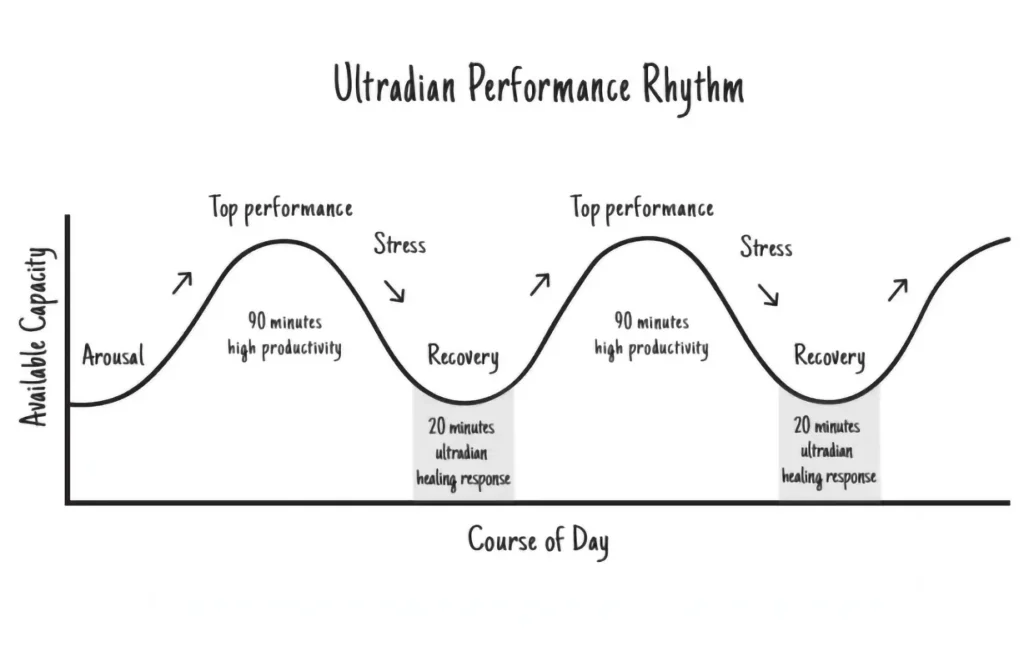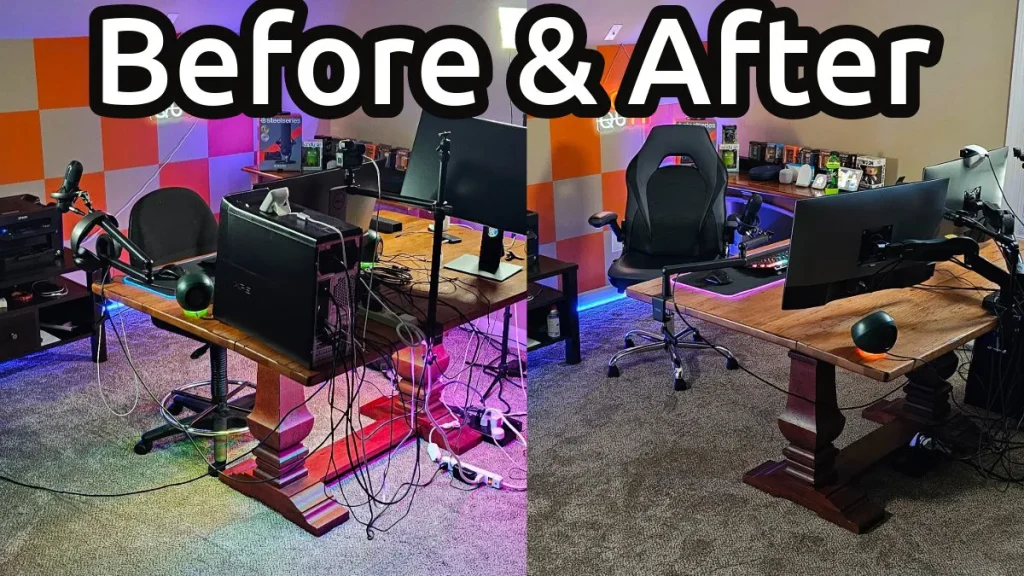In today’s constantly connected world, the average person is interrupted every 6 minutes, with each interruption requiring 23 minutes to regain full concentration. Whether you’re working remotely, studying for exams, or tackling personal projects, these constant distractions are silently sabotaging your productivity and mental well-being.
The modern environment creates unique focus challenges for everyone. Digital notifications constantly pull at your attention. Environmental interruptions break your concentration just as you’re getting into a flow state. Even your own thoughts can become powerful distractions when you’re trying to focus on important tasks.
Add to this the difficulty of maintaining consistent work rhythms, the mental fatigue from attempting to multitask, and the burnout from extended screen time without proper breaks, and it’s no wonder so many of us struggle to stay productive.
But there’s a simple yet powerful solution that can transform your productivity: the Pomodoro Technique.
This time-tested method helps you:
- Create clear work/break boundaries
- Maintain concentration during designated work periods
- Manage both external and internal distractions
- Build sustainable productivity habits
- Prevent burnout while increasing output quality
Let’s explore how this technique can revolutionize your focus and productivity, no matter where or how you work.
What is the Pomodoro Technique and Why It Works for Anyone Struggling with Focus
The Science Behind Timed Work Sessions
The Pomodoro Technique was developed in the late 1980s by Francesco Cirillo, who named it after the tomato-shaped kitchen timer he used as a university student. The basic concept is beautifully simple: work with complete focus for 25 minutes, then take a 5-minute break.
This approach isn’t arbitrary—it’s based on how our brains naturally function. Research shows that most people can maintain peak concentration for about 20-45 minutes before attention begins to wander. By working in focused bursts that align with your brain’s natural attention cycle, you’re working with your biology, not against it.
Studies on productivity cycles consistently show that our brains operate in ultradian rhythms—natural cycles of high and low energy throughout the day. The Pomodoro Technique capitalizes on these natural rhythms by incorporating regular breaks that prevent mental fatigue and cognitive depletion.

Perhaps most importantly, structured breaks actually improve overall output quality. When you know a break is coming, you’re more likely to maintain focus during work periods. And those breaks give your brain valuable time to process information, make new connections, and recharge for the next session.
Universal Focus Challenges the Pomodoro Technique Solves
One of the most powerful aspects of the Pomodoro Technique is its versatility in addressing common focus problems:
- For procrastinators: The technique provides a gentle on-ramp to difficult tasks. Committing to just 25 minutes feels manageable, even when the overall project seems overwhelming.
- For the digitally distracted: Pomodoros create clear boundaries for when you’ll engage with notifications and when you’ll ignore them, breaking the habit of constant digital checking.
- For those lacking structure: The technique creates consistent rhythm regardless of your environment—whether you’re working from home, in a busy office, or at a café.
- For anyone wanting stronger focus: Like a muscle that strengthens with exercise, your ability to concentrate improves as you practice sustaining attention during Pomodoro sessions.
Setting Up Your Personal Pomodoro System for Success
Essential Tools for Effective Pomodoro Sessions
You don’t need fancy equipment to get started with the Pomodoro Technique. A simple kitchen timer works perfectly—and there’s something psychologically powerful about the physical act of winding a timer that signals “it’s time to focus.”
Digital alternatives offer additional features that many find helpful:
- Apps like Focus To-Do or Forest track your sessions and visualize progress
- Browser extensions like StayFocusd or Cold Turkey block distracting websites during focus periods
- Notification management tools that batch interruptions for your break times
- Low-tech alternatives for environments where digital tools aren’t practical
Pro Tip: The best Pomodoro timer is the one you’ll actually use consistently. Experiment with different options to find what works for your specific needs and preferences.
Creating a Distraction-Free Workspace Anywhere
Your physical environment plays a crucial role in your ability to maintain focus. Wherever you’re working, take a few minutes to optimize your space before starting a Pomodoro session.

Quick workspace optimization checklist:
- Clear visual clutter from your immediate area
- Close unnecessary browser tabs and applications
- Silence notifications on all devices
- Have water and any necessary materials within reach
- Communicate your “focus time” to others around you
Visual cues can be powerful signals to both yourself and others. Try using a specific item (like a small flag or colored card) that indicates “focus time in progress” to those around you. This simple signal can dramatically reduce interruptions.
The Universal 5-Step Pomodoro Process
Step 1: Strategic Task Planning for Maximum Impact
Before you start your first Pomodoro, take a few minutes for strategic planning. This preparation phase is often overlooked but is crucial for maximizing the technique’s effectiveness.
Effective task planning strategies:
- Batch similar tasks together to maintain a similar thinking mode throughout a session
- Prioritize using the Eisenhower Matrix from our productivity fundamentals guide
- Break complex projects into smaller chunks that fit within a single Pomodoro
- Set realistic goals for each session—be specific but realistic about what you can accomplish
Insight: The most productive Pomodoro sessions begin with clear intentions. Taking just 5 minutes to plan can double the effectiveness of your focus time.
Step 2: Customizing Your Intervals for Personal Productivity
While the standard Pomodoro is 25 minutes of work followed by a 5-minute break, this isn’t a rigid rule. The key is finding the rhythm that works best for you and the type of work you’re doing.
Consider these factors when customizing your intervals:
- Task complexity: More complex work may benefit from longer sessions (35-45 minutes)
- Energy levels: Match interval length to your natural energy cycles throughout the day
- Environment: High-interruption environments might require shorter sessions
- Work type: Creative vs. analytical vs. administrative tasks may need different timing
Experiment with these common variations:
- Standard: 25 min work / 5 min break
- Extended: 45 min work / 10 min break
- Ultra-focus: 90 min work / 20 min break
- Quick cycles: 15 min work / 3 min break
Reminder: After completing four work sessions of any length, take a longer break of 15-30 minutes to prevent burnout.
Step 3: Distraction Management Protocols
Distractions are inevitable, but how you handle them determines whether they derail your productivity or merely pause it briefly.
The “distraction sheet” technique is a simple but powerful tool:
- Keep a small notepad next to your workspace
- When a distraction pops up, quickly jot it down
- Immediately return to your focus task
- Address the noted items during your next break
For handling different types of interruptions:
| Interruption Type | Handling Strategy |
|---|---|
| Digital notifications | Silence devices, use “Do Not Disturb” mode |
| Colleague/family interruptions | Use visual signals, provide a specific time to reconnect |
| Self-interruptions (thoughts) | Note quickly and return to task |
| Unavoidable urgent matters | Pause timer, handle efficiently, restart Pomodoro |
Strategy: Create a personal “distraction response script” for common interruptions. Having prepared responses reduces the mental load of deciding how to handle each disruption.
Step 4: Maximizing Micro-Breaks Between Pomodoros
The 5-minute breaks between Pomodoros aren’t just downtime—they’re strategic recovery periods that help maintain your productivity throughout the day.
Effective 5-minute break activities:
- Stand up and stretch
- Do a quick set of jumping jacks or yoga poses
- Look out a window at a distant object (reduces eye strain)
- Get a glass of water
- Take several deep breaths
- Quickly tidy your workspace
What to avoid during breaks:
- Checking email or social media (often extends beyond break time)
- Starting complex new tasks
- Engaging in stressful conversations
- Activities that make it difficult to return to focus
Tip: The quality of your breaks directly impacts the quality of your next focus session. Treat breaks as seriously as you treat work periods.
Step 5: Longer Breaks That Restore Focus
After completing four Pomodoros, take a longer break of 15-30 minutes. These extended breaks are crucial for preventing burnout and maintaining high performance throughout your day.

Restorative longer break activities:
- Take a short walk outside
- Do a brief meditation session
- Enjoy a healthy snack
- Have a brief, positive social interaction
- Perform a simple household task that provides a sense of accomplishment
The 3-minute return ritual: Use the last three minutes of your longer break to mentally prepare for returning to focus mode:
- Review your task list
- Set a clear intention for your next Pomodoro set
- Take three deep breaths
- Start your timer
Advanced Pomodoro Strategies for Specific Challenges
The “High-Interruption Environment” Adaptation
Not everyone has the luxury of controlling their environment. If you work in an open office, busy household, or other high-interruption setting, you’ll need to adapt the standard Pomodoro approach.
High-interruption environment strategies:
- Use shorter 15-20 minute Pomodoros to increase completion likelihood
- Create visual “do not disturb” signals that others recognize
- Prepare recovery notes to quickly resume after interruptions
- Schedule Pomodoro sessions during typically quieter periods
- Use noise-cancelling headphones with focus-enhancing sounds
Communication Template: “I’m in a deep focus session until [specific time]. Could we connect at [alternative time] instead? This helps me give your matter my full attention.”
Pomodoro Techniques for Different Types of Work
The basic Pomodoro framework can be customized for virtually any type of work or study.
For creative work:
- Longer sessions (40-60 minutes) to accommodate flow state
- Visualization or inspiration activities during breaks
- “Incubation” breaks where you step away from problems to allow subconscious processing
For students:
- Subject-switching between Pomodoros to maintain interest
- Flashcard reviews during micro-breaks for spaced repetition
- Check out our guide on effective study techniques for more student-specific adaptations
For administrative tasks:
- Batch similar tasks within single Pomodoros
- Create “power hour” blocks of multiple Pomodoros for clearing backlogs
- Use checklists to track progress through repetitive tasks
Insight: The most effective Pomodoro practitioners adapt the technique to the work rather than forcing all work to fit the same Pomodoro structure.
Combating Digital Fatigue with Modified Pomodoros
Digital fatigue—the mental exhaustion that comes from extended screen time—is a growing challenge for many of us. The Pomodoro Technique can be specifically adapted to address this issue.
Digital fatigue prevention strategies:
- Follow the 20-20-20 rule during breaks: every 20 minutes, look at something 20 feet away for 20 seconds
- Incorporate non-screen activities between digital Pomodoros
- Use blue-light filtering glasses or screen settings during extended computer work
- Position screens at proper ergonomic heights and distances as outlined in our ergonomic workspace guide
3-minute eye and body reset routine:
- Roll your shoulders backward and forward (30 seconds)
- Focus on distant objects through a window (30 seconds)
- Cup palms over closed eyes (30 seconds)
- Gentle neck stretches in all directions (60 seconds)
- Wrist and finger stretches (30 seconds)
Tracking and Improving Your Pomodoro Practice
Productivity Metrics That Actually Matter
To improve your Pomodoro practice over time, focus on meaningful metrics rather than simply counting completed Pomodoros.
Valuable metrics to track:
- Focus quality rating: Score each Pomodoro from 1-5 based on how well you maintained concentration
- Distraction frequency: Count how many times you’re tempted to break focus
- Task completion accuracy: How well did you estimate what could be accomplished in each session?
- Energy levels: Track how different times of day affect your focus capacity
Simple tracking methods:
- Keep a paper journal with basic ratings after each session
- Use a specialized Pomodoro app with tracking features
- Create a simple spreadsheet to identify patterns over time
Strategy: The act of measurement itself improves performance. Even basic tracking will make you more conscious of your focus habits and lead to natural improvements.
Troubleshooting Common Pomodoro Challenges
Even with the best intentions, you’ll encounter challenges with the Pomodoro Technique. Having strategies ready for common obstacles will help you maintain your practice.
Common challenges and solutions:
| Challenge | Solution Strategy |
|---|---|
| Can’t complete a full Pomodoro | Start with shorter sessions and gradually build up |
| Mind constantly wanders | Use the “distraction sheet” technique more rigorously |
| Urgent interruptions | Develop a quick evaluation protocol for true vs. perceived urgency |
| Resistance to starting | Promise yourself “just one Pomodoro” to overcome initial friction |
| Forgetting to take breaks | Set dual timers—one for work, one for breaks |
Reminder: Consistency matters more than perfection. A “failed” Pomodoro still builds the habit and provides valuable feedback for improvement.
Creating Sustainable Habits with Pomodoro Chains
The true power of the Pomodoro Technique emerges when it becomes a consistent habit rather than an occasional productivity hack.
Habit-building strategies:
- Start small: Begin with just 1-2 Pomodoros daily on your most important work
- Create triggers: Link Pomodoro sessions to existing habits in your routine
- Track streaks: Mark each day you complete your target number of Pomodoros
- Find accountability: Share your Pomodoro goals with a colleague or friend
- Celebrate milestones: Reward yourself after completing 50, 100, or 200 Pomodoros
Weekly planning ritual for Pomodoro success:
- Review upcoming projects and deadlines
- Identify high-impact tasks that would benefit from focused attention
- Block specific time slots for Pomodoro sessions in your calendar
- Prepare your workspace and tools in advance
Insight: The Pomodoro Technique is not just a productivity tool—it’s a practice that builds the fundamental skill of attention control, which benefits every area of your life.
Conclusion
The Pomodoro Technique offers a remarkably effective framework for anyone struggling with focus and productivity challenges in today’s distraction-filled world.
By creating structure in any environment, providing built-in protection against distractions, preventing burnout through systematic breaks, and increasing productivity while reducing stress, this simple method addresses the universal challenges of maintaining focus in modern life.
Perhaps most importantly, the technique helps you build focus as a trainable skill over time, gradually strengthening your ability to concentrate despite the many demands on your attention.
Ready to transform your productivity? Start with just one Pomodoro session today, focusing on your most important task. Experience firsthand how this structured approach can help you overcome distractions and accomplish more with less stress.
What’s one distraction that consistently derails your productivity, and how might the Pomodoro Technique help you manage it? Share your experience in the comments below or check out our recommended productivity tools to find the perfect Pomodoro timer to get started immediately.
